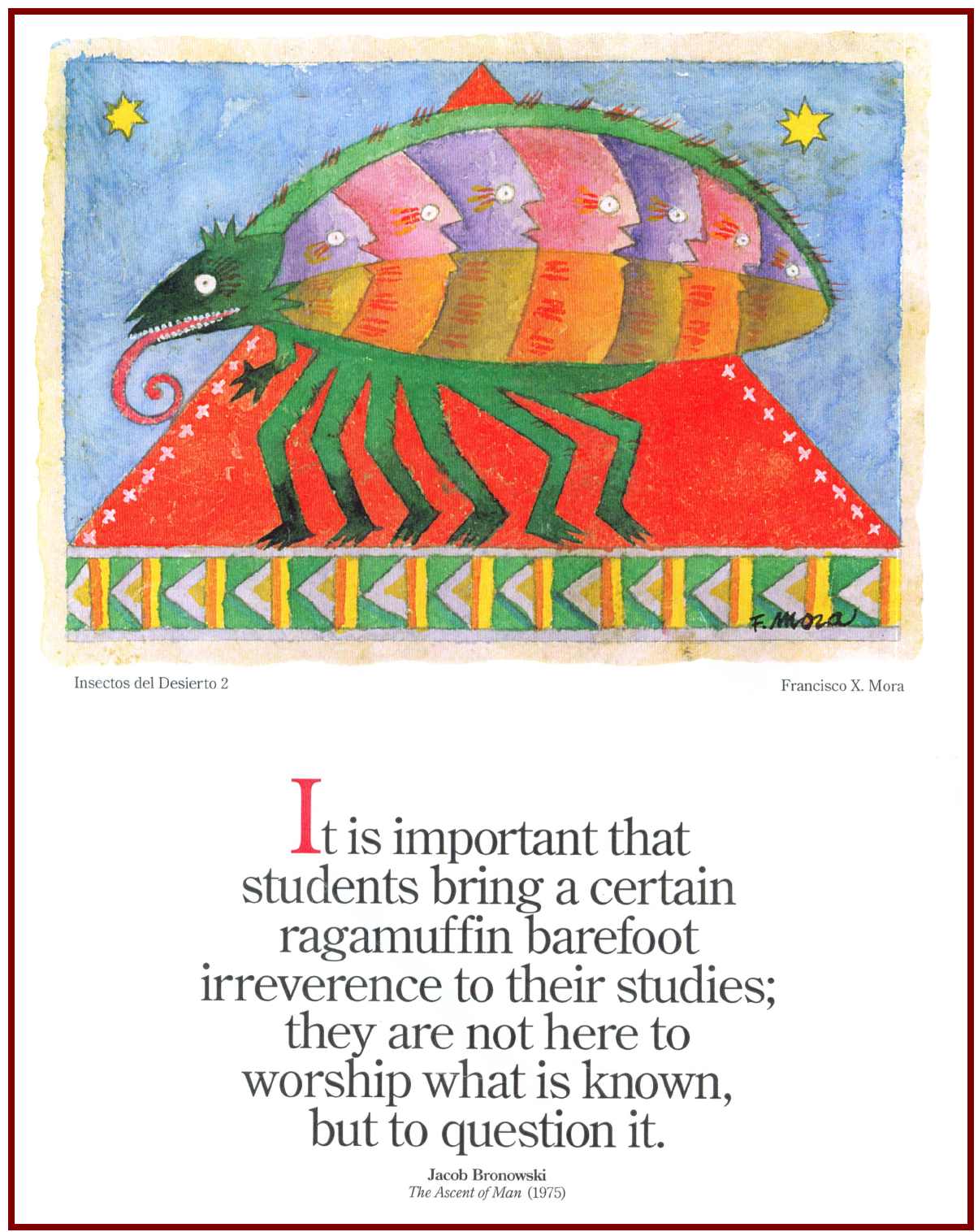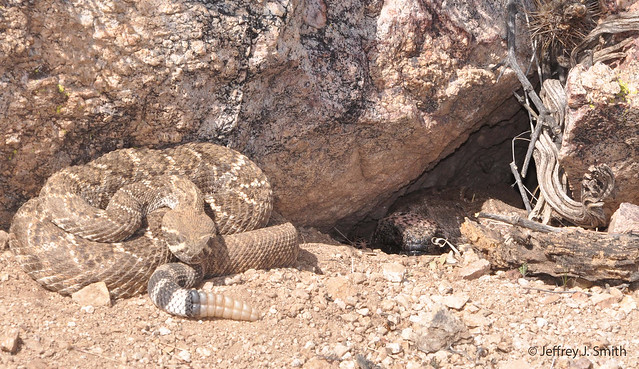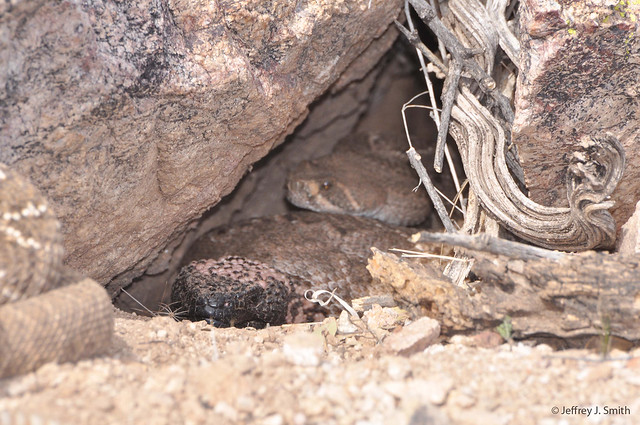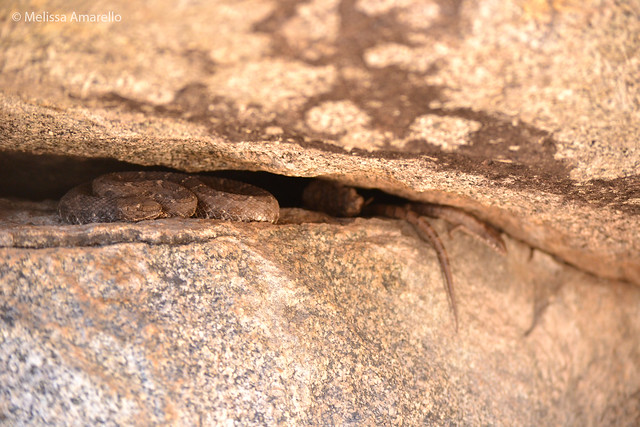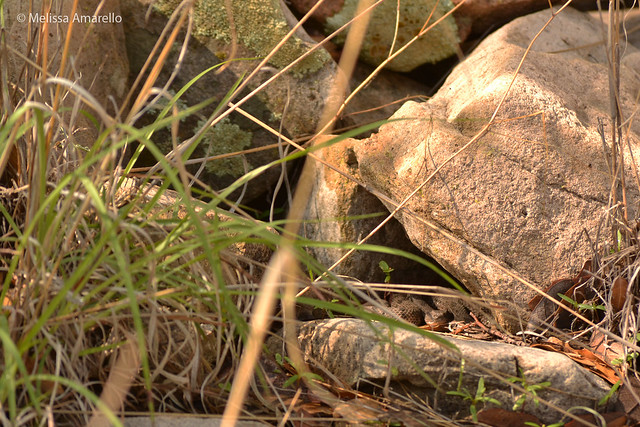February is “Women and Snakes” Month!
While herpetology (the study of reptiles and amphibians, including snakes) is still largely a man's world, there are more women in the field each year. Each day this month the Center for Snake Conservation (CSC) is highlighting a different woman working to promote snake conservation.
Today they're highlighting us (or rather, one of us):
 THANKS CSC! Follow them on Facebook to learn about other women working in snake conservation and all the other important work done by the CSC.
THANKS CSC! Follow them on Facebook to learn about other women working in snake conservation and all the other important work done by the CSC.
Monday, February 4, 2013
Tuesday, January 22, 2013
"Fear of the dangers of anthropomorphism has caused ethologists to neglect many interesting phenomena, and it has become apparent that they could afford a little disciplined indulgence." (Hinde 1982)
"To endow animals with human emotions has long been a scientific taboo. But if we do not, we risk missing something fundamental, about both animals and us." (de Waal 1997)
Many scientists, in their efforts to be unbiased and avoid anthropomorphism (assigning human traits to non-human animals), engage in anthropodenial (de Waal 1997). Anthropodenial is the opposite of anthropomorphism: the refusal to acknowledge humanlike characteristics of non-humans animals, which is just a bias of another sort. As indicated by Hinde and de Waal above, scientists have missed some interesting animal behaviors because of anthropodenial. (For more on this topic, check out de Waal 1997.)
For example, numerous observations of rattlesnake families dating back more than a hundred years were dismissed by the godfather of rattlesnake biology, Laurence Klauber:

Their propinquity, such as it is, does not result from any maternal solicitude; rather it is only because the refuge sought by the mother is also used as a hiding place by the young. (Klauber 1956)
In 1992, Harry Greene, Peter May, David Hardy, Jolie Sciturro, and Terence Farrell published an article on viper parental care in a peer-reviewed book. In it, they present evidence that not only do families aggregate, but mother snakes actively defend their newborns.
Was there some technological advance at that time that finally revealed this behavior to scientists? No. But, it's difficult to see what you don't look for and these authors took the time to look. They also reviewed others' observations of parental care in vipers, demonstrating that this behavior is widespread and more than mere attendance.
When we began our study of social snake behavior in 2010, we were armed with cameras, binoculars, and field notebooks. With these simple tools we managed to document behavior that was once so easily dimissed. How? We were looking for it. And maybe more importantly, we largely left the snakes alone and let them tell their story.
This is Woody's story.

We first encountered Woody (adult female Arizona black rattlesnake, Crotalus cerberus) in a pile of rocks and a jumble of downed pines in May 2010, about 150 yards from any known dens. We visited this area a number of times through the summer, and found her almost every time, relaxing near some rocks or coiled among woody debris (for which she is named). Because of her camouflage, we would have to search around for her, which sometimes brought us in close proximity, but Woody was even tempered, never rattling or attempting escape.
Then one day in late August, everything changed. We discovered several newborn rattlesnakes basking near Woody's favored spot. As we approached to get a closer look, but no closer than we had approached Woody so many other times, we heard muffled rattling from under the rocks. As we started snapping photos of the little ones, Woody poked her head out of her shelter and then proceeded to crawl from her refugetoward us, still rattling, and glaring directly at us. Our once-placid Woody was now fearless and wanted us to know she would not tolerate our advance. Impressed with her maternal instincts and not wanting to distress her or her young, we quickly backed off.

We were more careful in future visits to Woody's nest, but she remained a vigilant mother: rattling from within her shelter if we got too close, or assuming a defensive posture in between us and her kids (as shown in the photo above). The young caught on too, retreating into shelter if mom was upset.
Eventually the babies shed and the family split up, each trying to get a meal before it was time to enter their den for the winter. Since Woody's nest wasn't located close to a known den, we weren't sure when we would see her again. Was Woody's den located at or near her nest site? Would she show up at one of the dens we already monitored?

On the very first day we visited the dens in April 2011, we spotted Woody, basking in a popular spot with several other snakes, including some little ones that were born the previous summer. One of these juveniles turned out to be Woody's baby, Adam.

The photo on the left is Adam (newborn on left) and Woody (right), at her nest in August 2010. Woody's nest was farther away than most in 2010, but Adam found his way to their den (photo on right taken at den basking area in spring 2011). In 2011 we starting using timelapse cameras, which caught Woody and Adam as they basked together:
Although it is not unusual to see adult and juvenile rattlesnakes basking together, Woody's interest in Adam is striking. Does her maternal regard for her offspring's well-being extend beyond the nest? If her mothering is genetic and beneficial to Adam, then such care could evolve. We have seen similar behavior in another female, following a juvenile from the previous year's nest (see this post for another example of this behavior).
Many underestimate the wonders and complexity of the natural world, especially when it comes to snakes. The more we remain open to the possibilities of nature, the more we will be able to see. Even though some of their greatest admirers denied it, rattlesnakes can be caring mothers.
References
de Waal, F. B. M. 1997. Are we in anthropodenial? Discover 18:50-53.
Greene, H. W., P. May, D. L. Hardy Sr., J. M. Sciturro and T. Farrell. 2002. Parental behavior by vipers. Pp. 179-205 in G. W. Schuett, M. Hoggren, M. E. Douglas, and H. W. Greene, eds. Biology of the Vipers. Eagle Mountain Publishing, Eagle Mountain, Utah.
Hinde, R. A. 1982. Ethology: Its Nature and Relations with Other Sciences. Oxford University Press, New York, New York.
Klauber, L. M. 1997. Rattlesnakes: Their Habits, Life Histories, and Influence on Mankind. 2nd ed. University of California Press, Berkeley, California.
Friday, November 30, 2012
 |
| A western diamond-backed rattlesnake (Crotalus atrox) with his mouth sewn shut for a rattlesnake roundup. Snakes are not under anesthesia during this painful procedure, but instead thrown in a freezer for awhile beforehand so they are too cold to move. Photo by Kim LaForest, courtesy of RARR. |
Monday, November 26, 2012
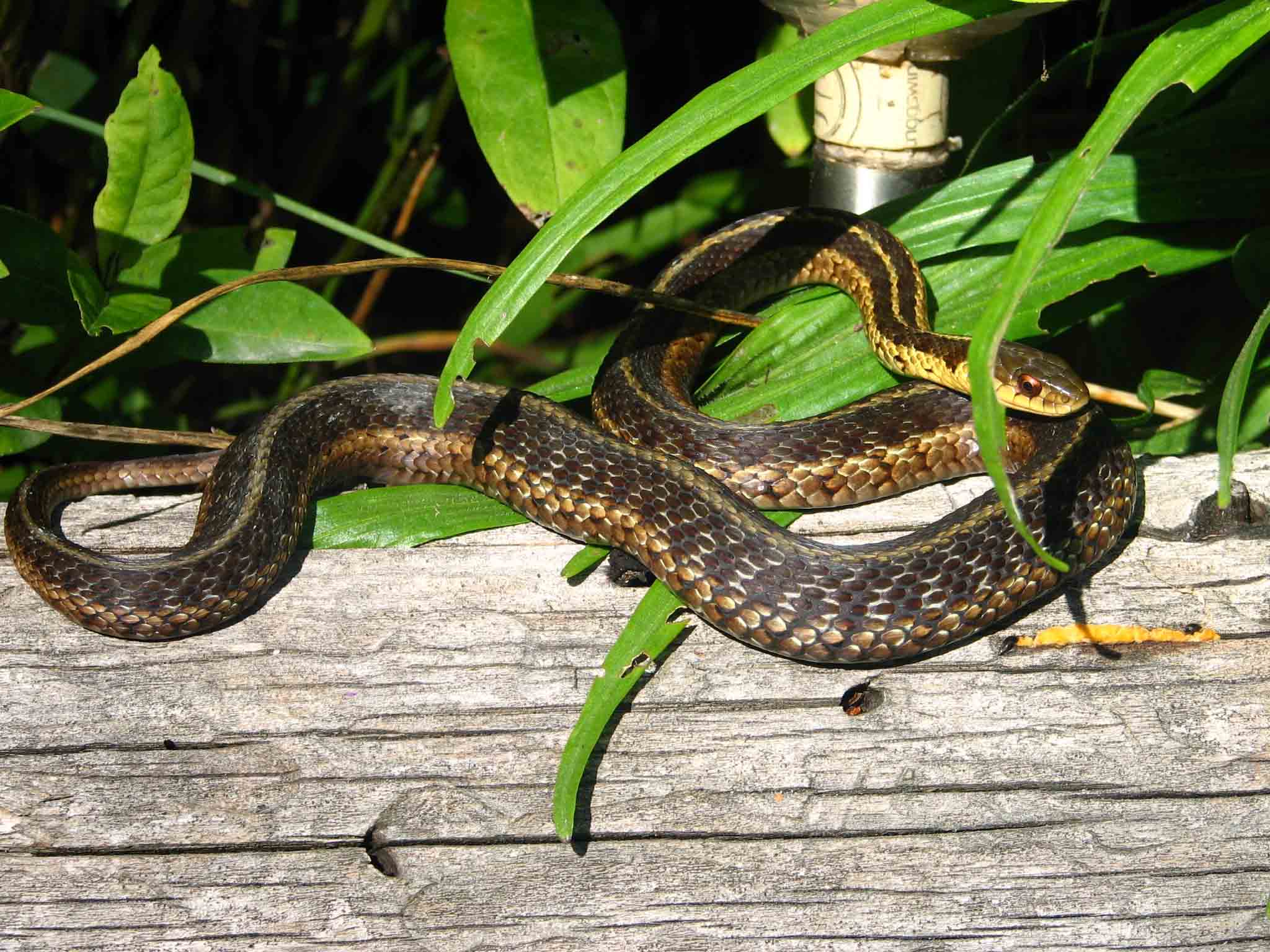 |
| From the website "How can you cuddle without arms?" |
I was contacted a while ago by a student in the Animal Behavior class at Reed College. For this class, pairs of students design a website on an animal behavior of their choice and this student was working on social snake behavior.
Check out their excellent website, "How can you cuddle without arms?".
What a fun and useful assignment! I am totally impressed with this class, but of course you'd expect great things from a class with this on their homepage:
Wednesday, October 17, 2012
When someone says social behavior, rattlesnakes are probably not the first animal that comes to mind. However, lizards exhibit a variety of complex, social interactions: stable family group-living, social and genetic monogamy, and cooperation (Chapple 2003, Davis et al. 2011, McAlpin et al. 2011).
Recently, Dr. Rulon Clark and colleagues documented cryptic sociality in rattlesnakes: pregnant female and juvenile timber rattlesnakes tend to aggregate with their kin. You can download and read the full article here.
We analyzed association patterns to describe social behavior of individual rattlesnakes. Specifically, we investigated two questions:
Gregariousness is an individual's propensity to be social.
Arizona black rattlesnakes (Crotalus cerberus) possess many traits linked to sociality: long lifespan, late maturation, and they care for their offspring. Important to this study, Arizona black rattlesnakes aggregate (group) at sites they use year after year (philopatric), are mainly diurnal, and phenotypically variable (individuals looked different).
We used remote timelapse cameras (Wingscapes Timelapse PlantCam and TimelapseCam 8.0) to record behavior of rattlesnakes within aggregations. We set up 1–3 cameras at each basking site, and they took photographs every 30 s from ~8am–6pm. We stitched these photographs into videos, which were lumped into day-long sampling periods.
Here we present results from one basking site (more to come from two additional sites!)
We primarily identified individual rattlesnakes using natural aberrancies in their dorsal patterns (see Zona's story for more information). When we captured rattlesnakes away from aggregation sites, we painted their rattles, which both assisted in identification and validated the pattern method.
This is an example of what our data look like, for one site on one day. Rattlesnakes observed within a body length were defined as in association; thus for rattlesnakes to be considered in association, we had to observe them together at least once during a particular day.
The next step was to take those observations of associated rattlesnakes and estimate the amount of time they spent together.
An association index (AI) estimates the amount of time each pair of rattlesnakes spent together. Because we were not always able to identify every individual in a group, we used the half-weight AI, which is less biased in these situations (Whitehead 2008, Cairns and Schwager 1987). The half-weight AI places more emphasis on the occasions when both animals are observed together than when one is observed without the other.
So now we have an estimate of the proportion of time each pair of rattlesnakes at this site spends together. We used the program SOCPROG to calculate AI's and test our research questions. Because AI's are not independent, SOCPROG implements a version of the permutation test developed by Manly (Bejder et al. 1998). This permutation test shuffled group membership within sampling periods (days) to produce a data set that represented what our data would have looked like if snakes were associating randomly. We then compared our observed data to the random data to see if rattlesnakes associated non-randomly.
Our measure of gregariousness was typical group size, or the mean group size experienced by an individual rattlesnake (Jarman 1974). We looked for differences in variation in typical group size (standard deviation = sd) between observed and randomly permutated data generated in SOCPROG.
Gregariousness varied among individual rattlesnakes; some rattlesnakes preferred to be alone or in small groups, while others preferred large groups.
Again, we are looking at variation in AI's between observed and random data. High variation in observed data, relative to random data, means that some pairs of rattlesnakes often associate (high AI) while others avoid each other (low AI).
Rattlesnakes are choosy about whom they do and do not associate with. At this site, observed variation in AI was significantly greater than random data overall and among female-female and female-juvenile pairs.
So YES - rattlesnakes are social. As mentioned above, we are currently analyzing data from two other basking sites and have a few more ideas to follow up this study:
We plan to use social network analysis to describe this population of rattlesnakes,
investigate how kinship affects association patterns,
and because we restricted our analyses to associations between Arizona black rattlesnakes as they emerged from their dens, we're interested in association patterns during the active season and in other rattlesnake species (left: black-tailed rattlesnakes in combat, Crotalus molossus; right: western diamond-backed rattlesnakes 'stacking', Crotalus atrox).
Our study describes social behavior in a 'non-social' species and may provide information on the evolution of sociality. But more importantly, our findings have the potential to impact conservation of an entire group of misunderstood and often maligned organisms. Humans have an innate fascination with snakes (Burghardt et al. 2009), but unfortunately, this keen emotional response is often appropriated by fear. Pernicious myths and popular media that have long portrayed snakes as malicious villains instill and nurture fear of snakes, which has led to widespread persecution and obstruction to conservation efforts (Seigel and Mullin 2009). In contrast to how snakes are usually seen in the media, recent research on rattlesnakes reveal behaviors that appeal to the general public: parental care (Greene et al. 2002, Amarello et al. 2011), cooperation, and social interactions (Clark et al. 2012, this study). By revealing the social nature of snakes, we are starting to change the public's perception of snakes from 'cold-blooded killer' to social creatures with complex family lives and make a positive impact on their conservation.
References and further reading
Amarello, M., J. J. Smith and J. Slone. 2011. Family values: Maternal care in rattlesnakes is more than mere attendance. Available from Nature Precedings.
Bejder, L., D. Fletcher and S. Brager. 1998. A method for testing association patterns of social animals. Animal behaviour 56:719-725.
Burghardt, G., J. Murphy, D. Chiszar and M. Hutchins. 2009. Combating ophiophobia: origins, treatment, education and conservation tools. Pp. 262-280 in S. J. Mullin and R. A. Seigel, eds. Snakes: ecology and conservation. Cornell University Press, Ithaca, NY, USA.
Cairns, S. J. and S. J. Schwager. 1987. A comparison of association indices. Animal Behaviour 35:1454-1469.
Chapple, D. G. 2003. Ecology, life-history, and behavior in the Australian Scincid genus Egernia, with comments on the evolution of complex sociality in lizards. Herpetological Monographs 17:145-180.
Clark, R. W., W. S. Brown, R. Stechert and H. W. Greene. 2012. Cryptic sociality in rattlesnakes (Crotalus horridus) detected by kinship analysis. Biology Letters, doi: 10.1098/rsbl.2011.1217.
Davis, A. R., A. Corl, Y. Surget-Groba and B. Sinervo. 2011. Convergent evolution of kin-based sociality in a lizard. Proceedings of the Royal Society B: Biological Sciences 278:1507-1514.
Greene, H. W., P. May, D. L. Hardy Sr., J. M. Sciturro and T. Farrell. 2002. Parental behavior by vipers. Pp. 179-205 in G. W. Schuett, M. Hoggren, M. E. Douglas, and H. W. Greene, eds. Biology of the vipers. Eagle Mountain Publishing, Eagle Mountain, Utah. USA.
Jarman, P. J. 1974. The social organisation of antelope in relation to their ecology. Behaviour 48:215-267.
McAlpin, S., P. Duckett and A. Stow. 2011. Lizards cooperatively tunnel to construct a long-term home for family members. PLoS ONE 6.
Seigel, R. A. and S. J. Mullin. 2009. Snake conservation, present and future. Pp. 281-290 in S. J. Mullin and R. A. Seigel, eds. Snakes: ecology and conservation. Cornell University Press, Ithaca, NY, USA.
Whitehead, H. 2008. Analyzing Animal Societies. University of Chicago, Chicago.
Monday, August 20, 2012
Friday evening while tracking Jaydin, we came across an Arizona black rattlesnake (Crotalus cerberus) hunting along an old corral fence.
BeeGee was still there the following morning, so we decided to put a camera on him.
While we have captured interactions between rattlesnake species and with squirrels before, it was pretty exciting to see both in one day!
What was going on between the Arizona black and western diamond-backed rattlesnakes? We don't know and would love to hear your thoughts in the comments below. For more information on squirrel - rattlesnake interactions, check out the work done by Rulon Clark's lab and his student Bree's blog.
In case the interspecies interactions weren't cool enough, BeeGee also demonstrated his species' ability to change color:
Thursday, July 19, 2012
Ever since we saw Roger Repp's talk at the Tucson Herpetological Society, Burrow Buddies — or Not?, we've been fascinated by different reptile species sharing shelter sites. Multiple species often share the same overwintering site; we shared this fun example here back in April:
At one of our new dens at Muleshoe Ranch, we have seen western diamond-backed rattlesnakes, spiny lizards, Gila monsters, coral snakes, patch-nosed snakes, earless lizards,
Arizona black rattlesnakes,
and Sonoran whipsnakes (cruising by while an Arizona black rattlesnake sits at the right side of the den opening).
We've also seen western diamond-backed rattlesnakes and Gila monsters sharing den sites elsewhere:
And, lizards that would be prey for rattlesnakes during the active season also share den sites with their potential predators:
But what about during the active season?
There are probably chance encounters like this:
 A black-tailed rattlesnake cruises by a resting Arizona black rattlesnake (Boyett).
A black-tailed rattlesnake cruises by a resting Arizona black rattlesnake (Boyett).Jaydin, a black-tailed rattlesnake we are radio-tracking at Muleshoe Ranch, spent a couple weeks shedding his skin in a particular rockpile earlier this summer. Last week we happened to be walking by that rockpile and even though we knew Jaydin was long gone, we looked underneath to see if anyone else was using it:
Sure enough, there was a juvenile western diamond-backed rattlesnake resting under the rock. For whatever reasons, these shelter sites serve the needs of different individuals of different species. In this case the visits by the black-tailed and western diamond-backed rattlesnakes were weeks apart, but what if they needed to use the rock at the same time?
A few days ago, a friend took us out to visit some rattlesnake nests. We stopped at a site that was being used this year by Sunny, a pregnant ridge-nosed rattlesnake, but found this little guy instead:
Where was Sunny? Did she move to a new nest site? Was she resting behind the rock rattlesnake? In more than 20 years of studying ridge-nosed and rock rattlesnakes, our friend has never seen them intermingle, despite the fact that these species are often found in the same habitat. After an unsuccessful check of other sites Sunny has used, we left to visit some other rattlesnake nests. We returned to Sunny's nest a while later and were greeted with this surprise:
Um, wow! What is going on here? Is this just coincidence or could they be interacting in a mutually beneficial way?
Through careful observation and using time-lapse cameras, we are seeing more examples of different species sharing sites. This is the first time we have heard of or seen two different snake species coiled together like this. If you have, we would love to hear about it in the comments section below - please share!











